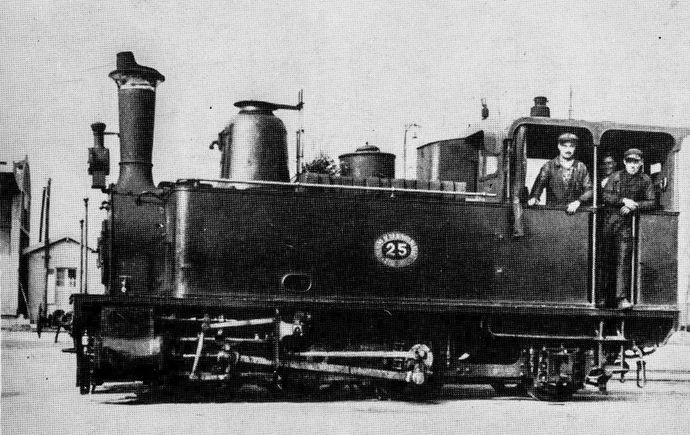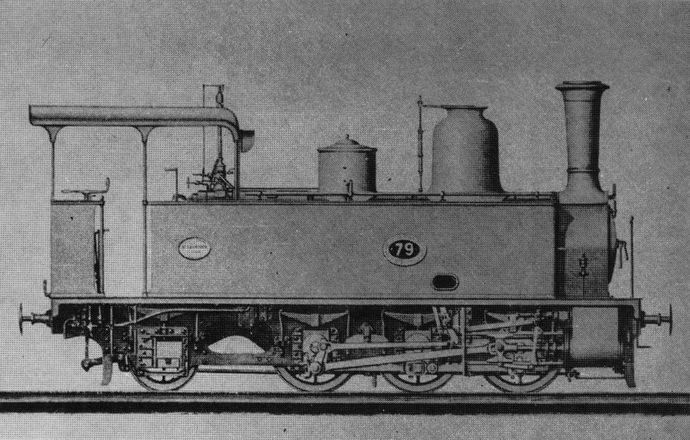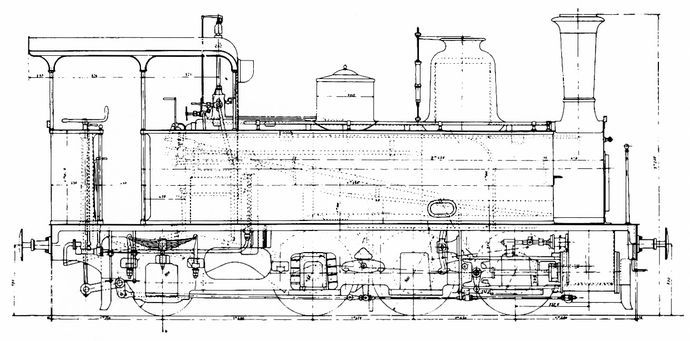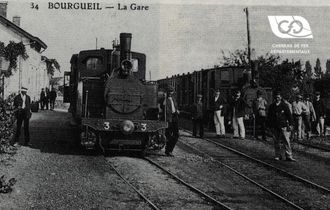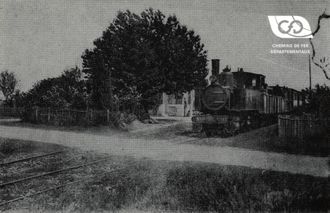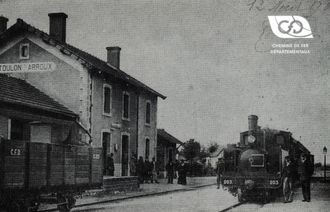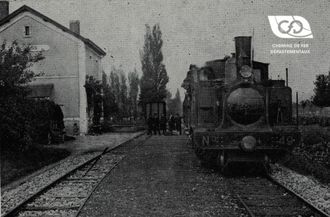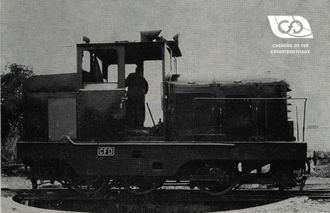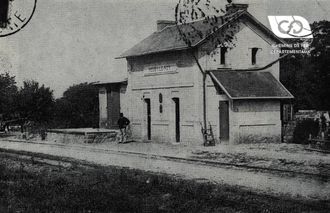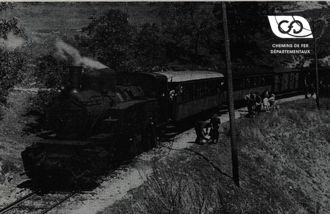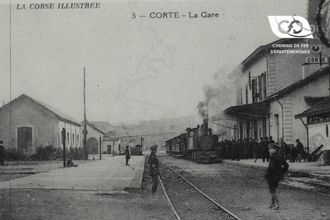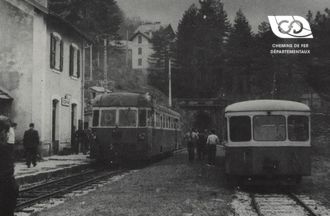Description of the Yonne type locomotive
Compared to the Indre-et-Loire 1-8 series, they were equipped with driving wheels of an increased diameter (0.900 m), allowing them to be used without damage at higher speeds. Like the latter, the suspension springs of the driving axles were combined by balancers, but the driving rods attacked the third axle. The smoke box door was always double-leafed and the steam dome, also located on the first shell, carried the balance valves. The sand tank was located on the second ferrule.
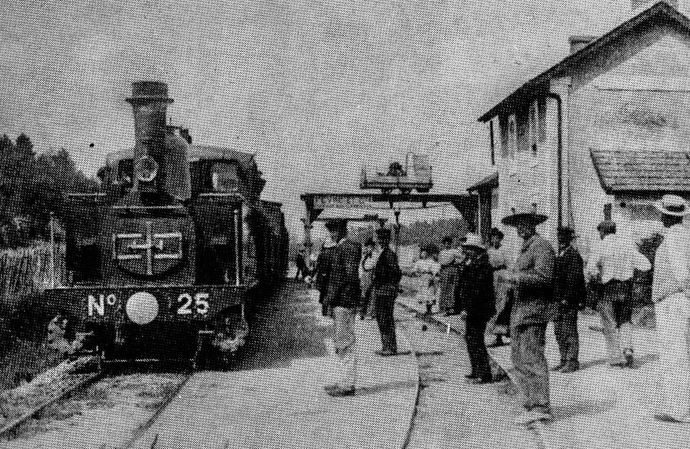
The shelter, with a front wall pierced by two visor bays, was open at the sides and at the rear. Four columns supported the roof. A sheet metal sheet was quickly installed at the rear to protect the driving crew. Later, depending on the network, the workshops installed either a leather curtain or a glass frame on the front sides.
A handrail was attached to the water boxes and to the upper part of the smoke box.
Later, as boilers were changed, a round smoke box door was placed on some units.
The decoration was identical to that of the previous series 1-8 with oval plates on the water boxes and marking on the front and rear crossmembers with the words "N °" and the registration on either side of the central stamp.
Later, as the G.R. was passed through, this marking was modified by affixing the Company's acronym on either side of the stamp. However, a few units were marked with the abbreviation on the left and the registration on the right. It seems that these modifications did not occur in Indre-et-Loire.
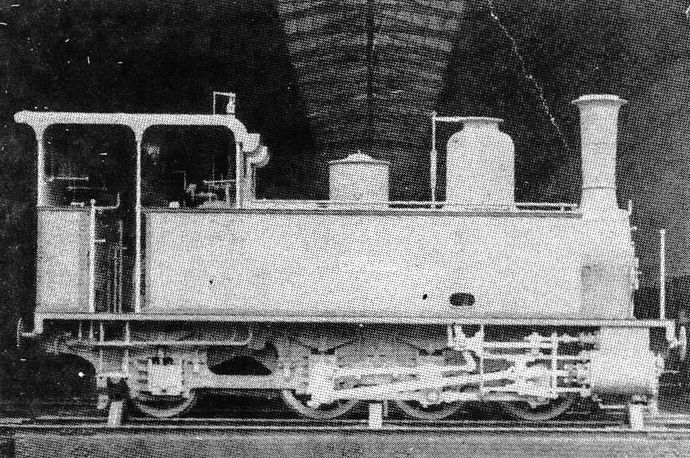
Delivery and assignment of the Yonne type locomotive
Dating from 1885, the first order for 12 units to equip the Yonne and Seine-et-Marne networks was also divided between the Saint-Léonard and Marcinelle and Couillet factories. This first series, whose registration of the units making it up had been taken following the work machines 11-12, was to be allocated at the rate of :
- 6 units for the Yonne
- 6 units for Seine-et-Marne, including 3 for Montmirail and 3 for Egreville.
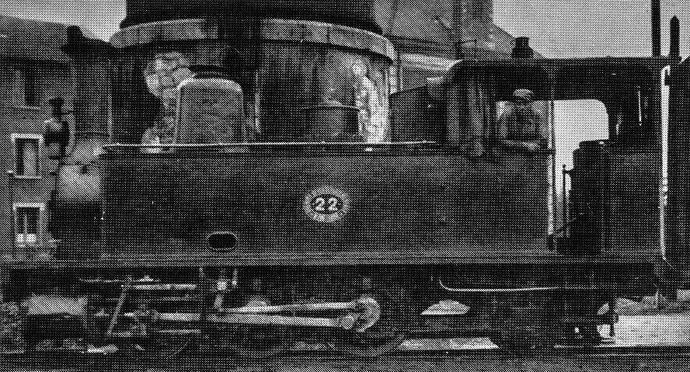
However, because of the urgent need for traction equipment for ballasting and track laying, the Company had the first three Couillet delivered to Chablis (13 to 15) and the fourth to Montmirail (16). The next three, of Saint-Léonard construction, were directed to Egreville (19 to 21) and the rest of the series to Chablis (22 to 24). The last two Couillet were assigned to Montmirail (17 to 18). However, these machines had some differences between them, namely :
- boiler of 109 tubes of 2.30 m in length with a total heating surface of 35.07 m2 for machines 13 to 16.
- boiler of 113 tubes of 2.42 m in length with a total heating surface of 39 m2 for machines 17 to 24, and once the work was completed, the C.F.D. decided to group together identical machines on the same lines in order to facilitate maintenance.
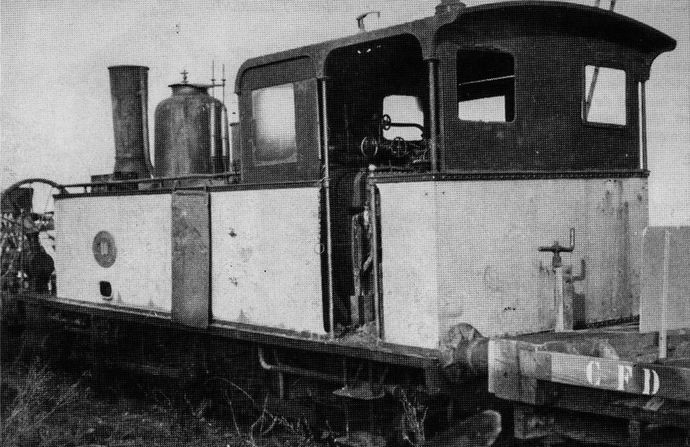
In the meantime, in 1886, a second order for 7 additional units was placed with the same establishments to equip the lines of the South Indre-et-Loire network, 4 at Couillet and 3 at Saint-Léonard.
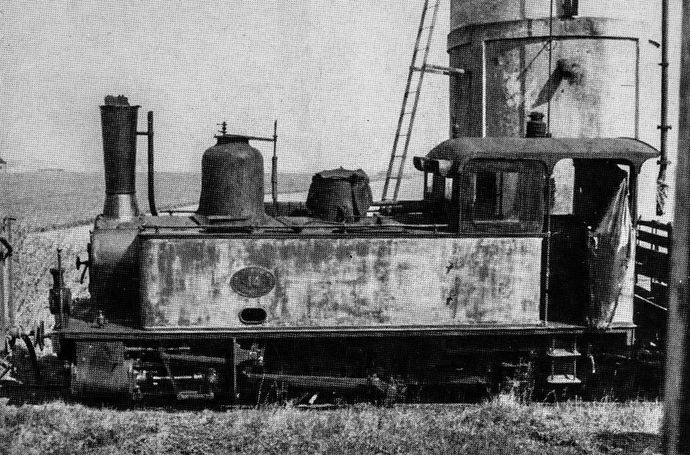
These new units were numbered from 25 to 27 for those coming from Saint-Leonard, following the previous order, and the four others were assigned Nos. 9 to 12, thus filling the corresponding gap in the logical sequence of registration of locomotives intended for the operating service, eliminating from this series the work machines 11-12 assigned to the construction service. We have seen earlier that the latter were assigned to operations as of 1900, which led the Company to consider their re-registration. However, it was decided to suspend their registration as long as the machines remained assigned to different networks, which was also the case for the Lagny type machines and the 4-5 Saint-Léonard series.
